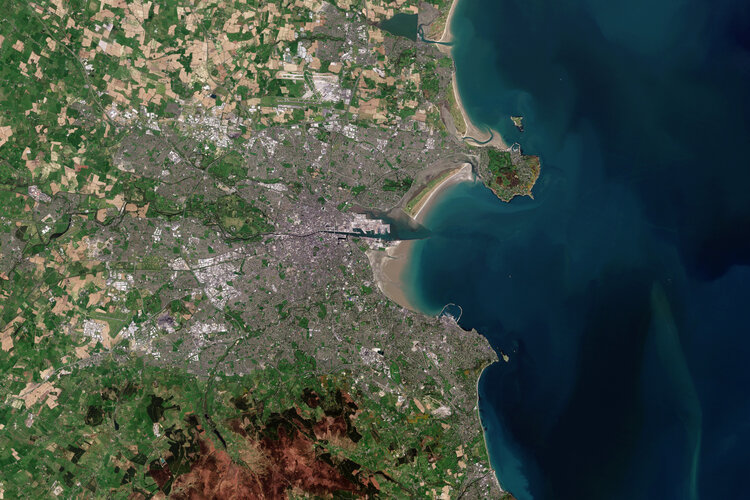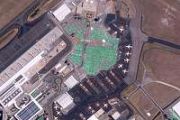
Copernical Team
Precise solar observations fed millions in ancient Mexico
 Without clocks or modern tools, ancient Mexicans watched the sun to maintain a farming calendar that precisely tracked seasons and even adjusted for leap years.
Before the Spanish arrival in 1519, the Basin of Mexico's agricultural system fed a population that was extraordinarily large for the time. Whereas Seville, the largest urban center in Spain, had a population of fewer than 50,000,
Without clocks or modern tools, ancient Mexicans watched the sun to maintain a farming calendar that precisely tracked seasons and even adjusted for leap years.
Before the Spanish arrival in 1519, the Basin of Mexico's agricultural system fed a population that was extraordinarily large for the time. Whereas Seville, the largest urban center in Spain, had a population of fewer than 50,000, Water-tracking SWOT satellite encapsulated in rocket payload fairing
 The international Surface Water and Ocean Topography mission is one step closer to launching so it can track water on more than 90% of Earth's surface.
The SWOT satellite, or the Surface Water and Ocean Topography mission, is now encapsulated in its payload fairing in preparation for launch. Technicians at the SpaceX processing facility at Vandenberg Space Force Base in California complete
The international Surface Water and Ocean Topography mission is one step closer to launching so it can track water on more than 90% of Earth's surface.
The SWOT satellite, or the Surface Water and Ocean Topography mission, is now encapsulated in its payload fairing in preparation for launch. Technicians at the SpaceX processing facility at Vandenberg Space Force Base in California complete MetTel Labs deploys VMware SD-WAN over Starlink
 MetTel reports that its Customer Innovation Labs, the research and development unit of MetTel, has deployed its Software-Defined Wide Area Network (SD-WAN) service using the VMware SD-WAN solution over SpaceX's Starlink satellite service.
These technologies far outpace the growth of the overall IT market which Gartner predicts at 5.1% year-over-year in 2023. According to the 2022 Gartner M
MetTel reports that its Customer Innovation Labs, the research and development unit of MetTel, has deployed its Software-Defined Wide Area Network (SD-WAN) service using the VMware SD-WAN solution over SpaceX's Starlink satellite service.
These technologies far outpace the growth of the overall IT market which Gartner predicts at 5.1% year-over-year in 2023. According to the 2022 Gartner M First Images Released From NOAA-21 VIIRS Instrument
 Bright blue water in the Caribbean Sea and smog in Northern India appear in the first global image produced with data from NOAA-21's VIIRS instrument.
The Visible Infrared Imaging Radiometer Suite (VIIRS) instrument on NOAA-21 began collecting Earth science data on Dec. 5 as the satellite passed over the East Coast of the United States. Data for the global image was collected over a period
Bright blue water in the Caribbean Sea and smog in Northern India appear in the first global image produced with data from NOAA-21's VIIRS instrument.
The Visible Infrared Imaging Radiometer Suite (VIIRS) instrument on NOAA-21 began collecting Earth science data on Dec. 5 as the satellite passed over the East Coast of the United States. Data for the global image was collected over a period Radiation shielding: MAPbI3/epoxy composites exhibit superior performance
 As the rapid development of aerospace and nuclear industries, higher requirements are raised for the service life of detectors and the safety of staff. Gamma ray with extremely short wavelength and strong penetration would cause the serious damage to the detectors and staff. Therefore, it is important to develop gamma ray shielding materials with outstanding radiation shielding performance.
As the rapid development of aerospace and nuclear industries, higher requirements are raised for the service life of detectors and the safety of staff. Gamma ray with extremely short wavelength and strong penetration would cause the serious damage to the detectors and staff. Therefore, it is important to develop gamma ray shielding materials with outstanding radiation shielding performance. Latest international water satellite packs an engineering punch
 Set for a Thursday, Dec. 15 launch, the Surface Water and Ocean Topography (SWOT) satellite promises to provide an extraordinary accounting of water over much of Earth's surface. Its measurements of fresh water and the ocean will help researchers address some of the most pressing climate questions of our time and help communities prepare for a warming world. Making this possible is a scientific
Set for a Thursday, Dec. 15 launch, the Surface Water and Ocean Topography (SWOT) satellite promises to provide an extraordinary accounting of water over much of Earth's surface. Its measurements of fresh water and the ocean will help researchers address some of the most pressing climate questions of our time and help communities prepare for a warming world. Making this possible is a scientific Planet makes its geospatial data available through Amazon SageMaker
 Planet Labs PBC (NYSE: PL), a leading provider of daily data and insights about Earth, has announced it is making geospatial data available through Amazon SageMaker, a fully managed machine learning (ML) service from Amazon Web Services (AWS). Now, Planet data can be directly embedded into Amazon SageMaker, allowing data scientists and ML engineers to acquire and analyze global, daily satellite
Planet Labs PBC (NYSE: PL), a leading provider of daily data and insights about Earth, has announced it is making geospatial data available through Amazon SageMaker, a fully managed machine learning (ML) service from Amazon Web Services (AWS). Now, Planet data can be directly embedded into Amazon SageMaker, allowing data scientists and ML engineers to acquire and analyze global, daily satellite Juno exploring Jovian moons during extended mission
 NASA's Juno mission is scheduled to obtain images of the Jovian moon Io on Dec. 15 as part of its continuing exploration of Jupiter's inner moons. Now in the second year of its extended mission to investigate the interior of Jupiter, the solar-powered spacecraft performed a close flyby of Ganymede in 2021 and of Europa earlier this year.
"The team is really excited to have Juno's extended
NASA's Juno mission is scheduled to obtain images of the Jovian moon Io on Dec. 15 as part of its continuing exploration of Jupiter's inner moons. Now in the second year of its extended mission to investigate the interior of Jupiter, the solar-powered spacecraft performed a close flyby of Ganymede in 2021 and of Europa earlier this year.
"The team is really excited to have Juno's extended Tiny meteorite may have caused leak from Soyuz capsule
 Russian and NASA engineers were assessing a coolant leak on Thursday from a Soyuz crew capsule docked with the International Space Station (ISS) that may have been caused by a micrometeorite strike.
Dramatic NASA TV images showed white particles resembling snowflakes streaming out of the rear of the vessel for hours.
The coolant leak forced the last-minute cancellation of a spacewalk by
Russian and NASA engineers were assessing a coolant leak on Thursday from a Soyuz crew capsule docked with the International Space Station (ISS) that may have been caused by a micrometeorite strike.
Dramatic NASA TV images showed white particles resembling snowflakes streaming out of the rear of the vessel for hours.
The coolant leak forced the last-minute cancellation of a spacewalk by Earth from Space: Dublin, Ireland

Dublin, the capital and largest city of Ireland, is featured in this image captured by Copernicus Sentinel-2.

































